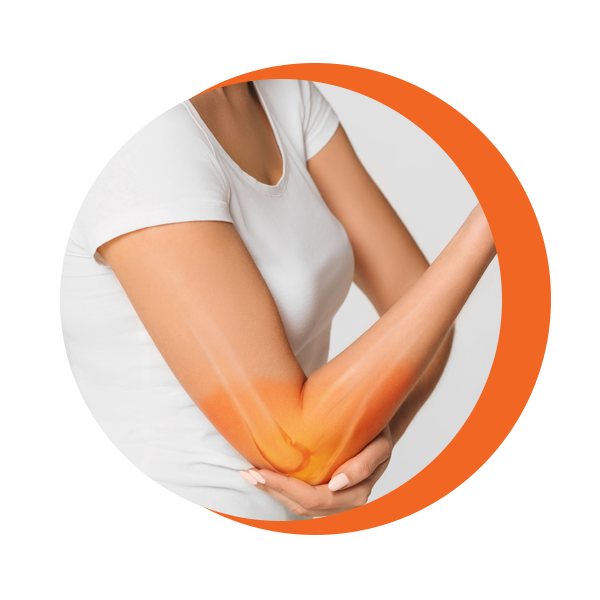You may not think of the elbow as an integral part of your daily routine, but you rely on this mighty little joint for almost every arm movement. A highly complex structure of bones, ligaments, muscles, tendons and nerves, the elbow is a synovial hinge joint that allows the arm to bend and straighten, while enabling the forearm to rotate. Although non-weight bearing, the elbow is extensively used in day-to-day activities, which makes it prone to injury, particularly for athletes.


The elbow is made up of three bones – the humerus, ulna, and radius – connecting the upper arm to the forearm. These bones are held together with ligaments, such as the medial collateral ligament on the inside of the elbow, the lateral collateral ligament on the outside of the elbow, and the annular ligament, which holds the radial head against the ulna.
Other main components of the elbow include the bicep and tricep tendons, and the radial, ulnar, and medial nerves that signal your muscles to function.
Referred to as lateral epicondylitis, tennis elbow is when the tendons in your elbow become inflamed or partially torn due to overuse. As indicated in its name, tennis elbow is common in tennis and other racquet sports due to the repetitive motions of the wrist and arm. Although playing tennis is one of the most frequent causes, individuals who work in jobs that require continual use of the forearm muscles may also develop the condition.
Tennis elbow symptoms may include:
A large majority of tennis elbow cases can be treated successfully with nonsurgical methods such as rest, medications, protective braces, cortisone injections, or physical therapy.
A dislocated elbow occurs when the bones that make up the elbow joint are moved out of alignment. When an elbow dislocation occurs, the bones in the arm may fracture, and the arteries and nerves can be significantly damaged as well.
Elbow dislocations most often occur due to a fall, but it can also happen from any traumatic injury, like a car accident. A dislocated elbow can cause:
If you are unable to move your elbow, cannot feel your hand, or have no pulse in your wrist, you should seek medical attention immediately. Most elbow dislocations can be popped back into place by your doctor, but you may still need to wear a splint afterwards to keep your elbow bent for the next few days.
Fortunately, physical therapy may reduce many of the symptoms associated with elbow pain. Whether you are an elite athlete or a weekend warrior, our certified doctors of physical therapy are ready to help you regain mobility and live pain-free.
Fill out the form below and we will get back to you shortly on scheduling your appointment date!

CONTACT:
833-4 WE HEAL (833-493-4325)
Fax: 833-918-2233
info@reenvisionpt.com
WORKING HOURS:
Monday – Friday
8:00AM – 5:00PM
Please note that the link will come from Phreesia, one of our partner companies.